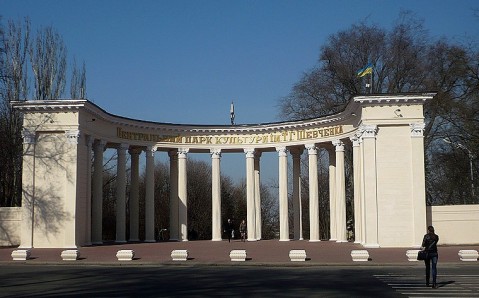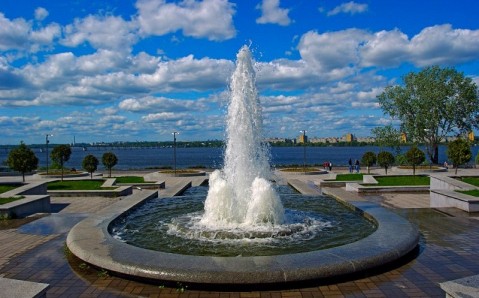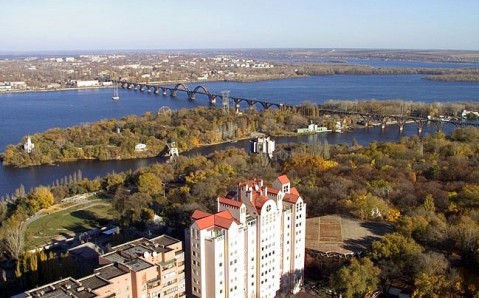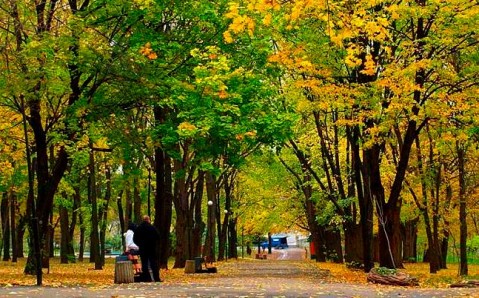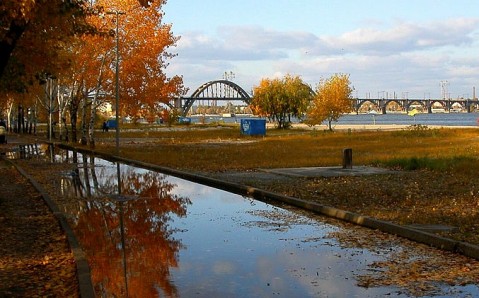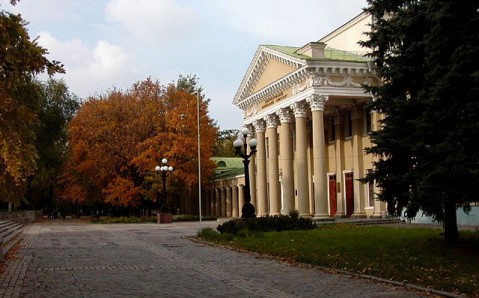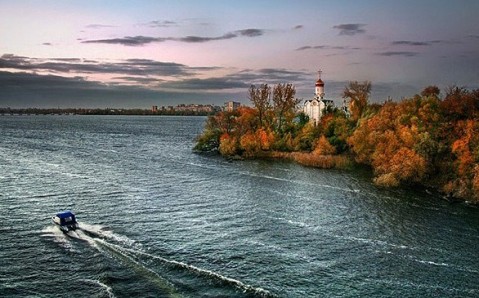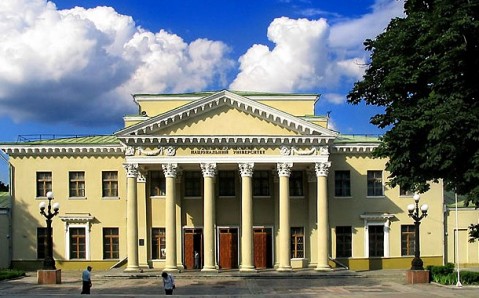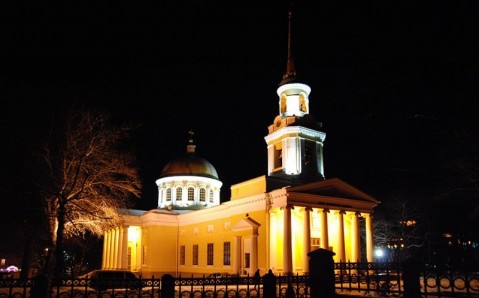Shevchenko Park
The Shevchenko Park is the oldest and one of the most beautiful parks in the city. Recognized as a monument of landscape art, it has long become the favorite strolling and recreation place for Dnipropetrovsk locals and guests, who are attracted by rich vegetation and an opportunity to admire amazing views of the mighty Dnieper River from park’s observation areas.
The story of the modern Shevchenko Park started before the city was built. In the first half of the 18th century, retired Zaporizhzhian Cossack captain Lazar Globa settled on the hills opposite to the Monastery Island. He built a house there and laid out a large orchard nearby. In 1784, the Empress Catherine II sent the Russian Prince Grigory Potemkin to the southern Dnieper lands to build a city. He liked the location of Cossack’s lands and bought them.
Several years later, the well-known architect from St. Petersburg built a luxurious palace in classicism style there. It is still one of the main adornments of the park complex, along with adorable English garden that appeared on the place of the former orchard. The plants were brought from all corners of the Russian Empire: greenhouse and several dozens of gardeners were brought from Potemkin’s Belarusian estate, a large number of fruit trees and vines were delivered from Moldova, and the whole government orchard was brought from Kremenchug.
The Potemkin palace and garden complex wasn’t finished, though, and after sudden death of its owner, it began to decay. The situation changed only in the early 19th century, when complex’s part that was adjoined to the Potemkin Palace passed to local nobility. Being beautified, it became the favorite strolling place for city elite.
The park became public only one hundred years later. In order to attract visitors, it was considerably reconstructed: the green area was cleared, lanes were laid, terraces were beautified, flower-beds were created, and restaurant and stage were built. At the same time the Potemkin Park was renamed as Shevchenko Park and preserved this name until now.
After the World War II park’s territory was considerably increased by adding the Monastery Island to it. Today it is divided in two parts: riverside and island. They are linked by a pedestrian bridge and a cableway. The key sights of Shevchenko Park’s riverside part are the Potemkin Palace and the Summer Theater. In addition to old history and numerous legends, the Monastery Island is notable for being an entertainment and active recreation spot: zoo and amusement park, cafés and restaurants, stud club and beach area are located there.

 Eastern
Eastern
